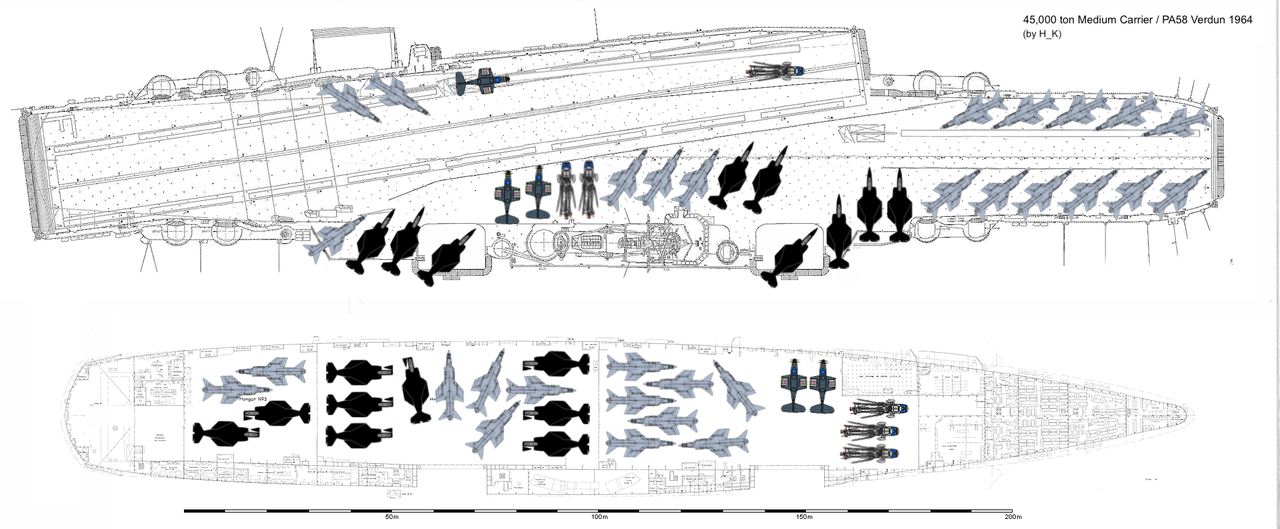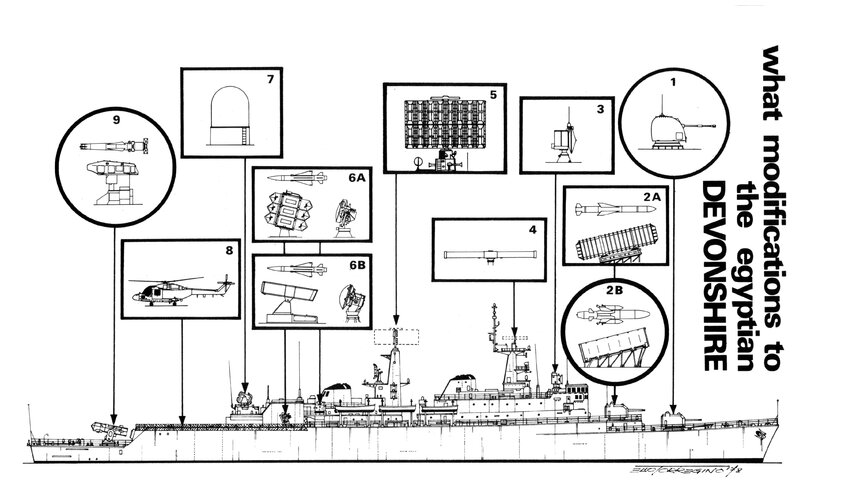- Joined
- 29 September 2006
- Messages
- 1,794
- Reaction score
- 1,360
Coming a bit late to the party, but I suspect that a CV for the RN in the early 60s would look quite like a CVA-01.
Given the size of the planes intended for interim service, the Sea Vixen and Buccaneer, the trick of deconflicting landing and launching operation by use of an Alaskan Highway to the forward catapult seems like an idea for the times. Whether we’d get the parallel deck or not, who knows?
With the new fancy steels planned for CVA-01 being a few years back in development, I’d expect standard steels, and perhaps standard arresting gear too.
The RN might see if they can get a transistorized Type 984 on her, that could be a useful development to update the other 984 ships with.
Missiles? Seacats and maybe Terrier or Tartar, though the latter possibly FFBNW.
Standard steam, though it would be nice to have gas turbines in there too.
Given the size of the planes intended for interim service, the Sea Vixen and Buccaneer, the trick of deconflicting landing and launching operation by use of an Alaskan Highway to the forward catapult seems like an idea for the times. Whether we’d get the parallel deck or not, who knows?
With the new fancy steels planned for CVA-01 being a few years back in development, I’d expect standard steels, and perhaps standard arresting gear too.
The RN might see if they can get a transistorized Type 984 on her, that could be a useful development to update the other 984 ships with.
Missiles? Seacats and maybe Terrier or Tartar, though the latter possibly FFBNW.
Standard steam, though it would be nice to have gas turbines in there too.


